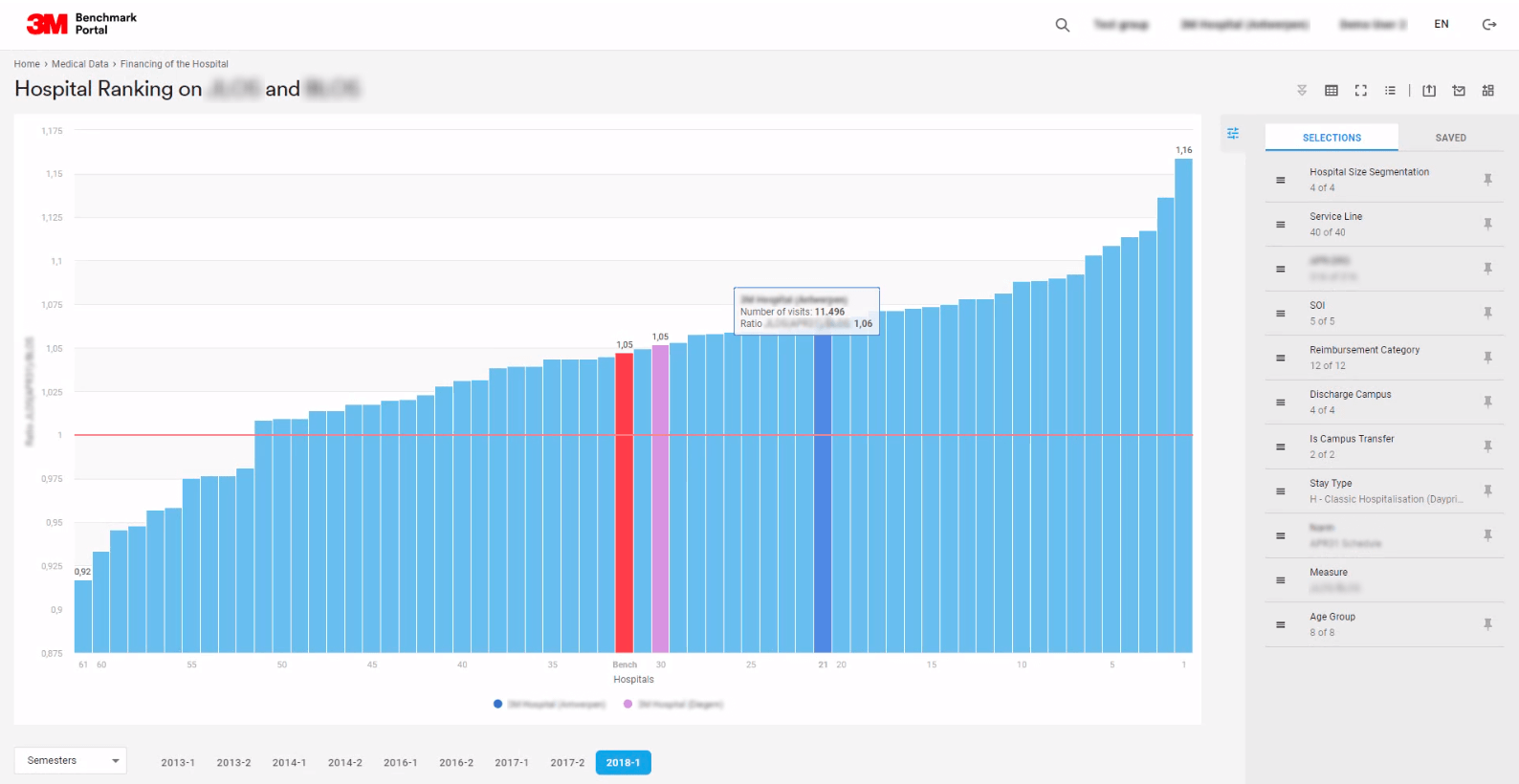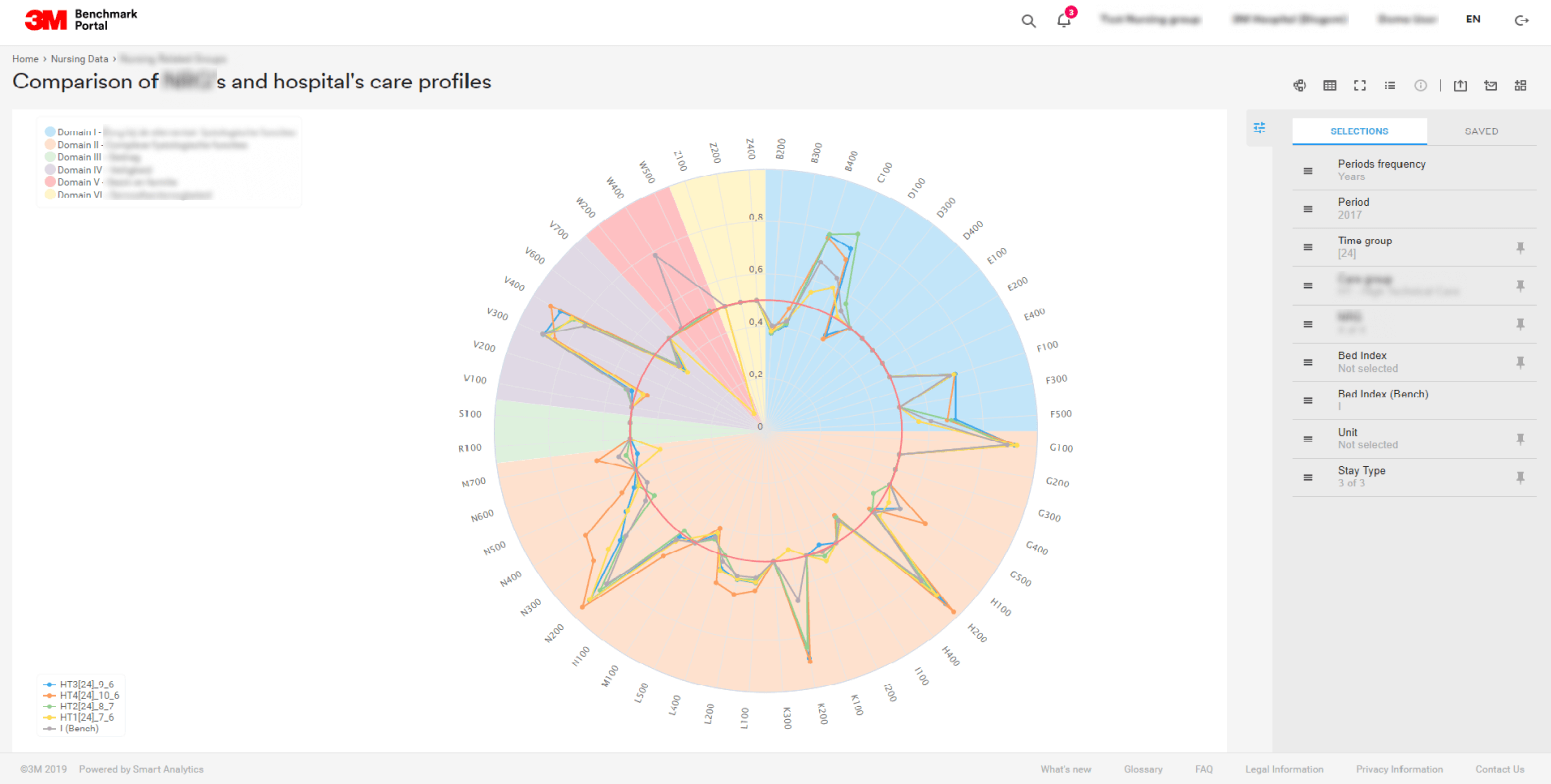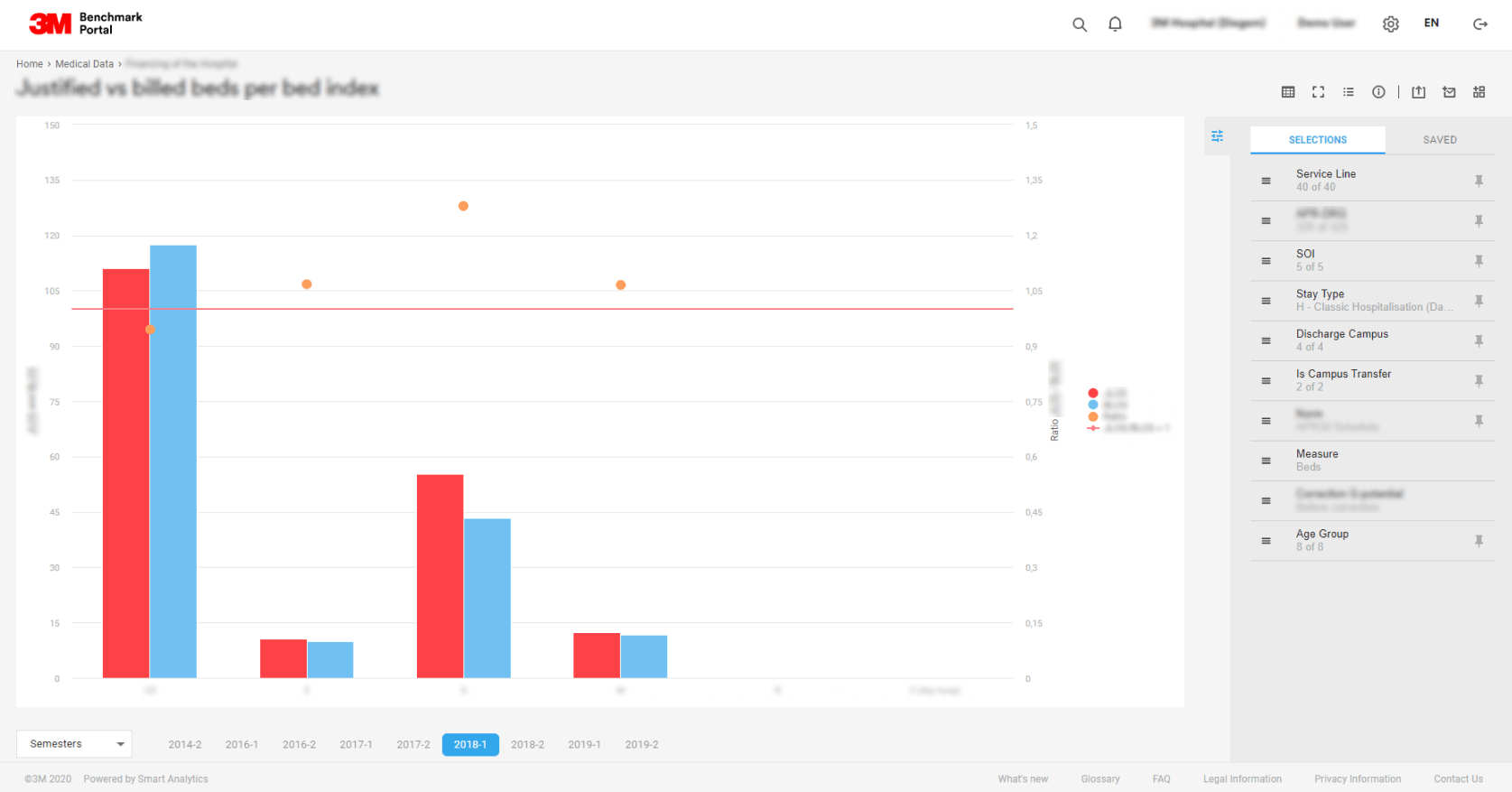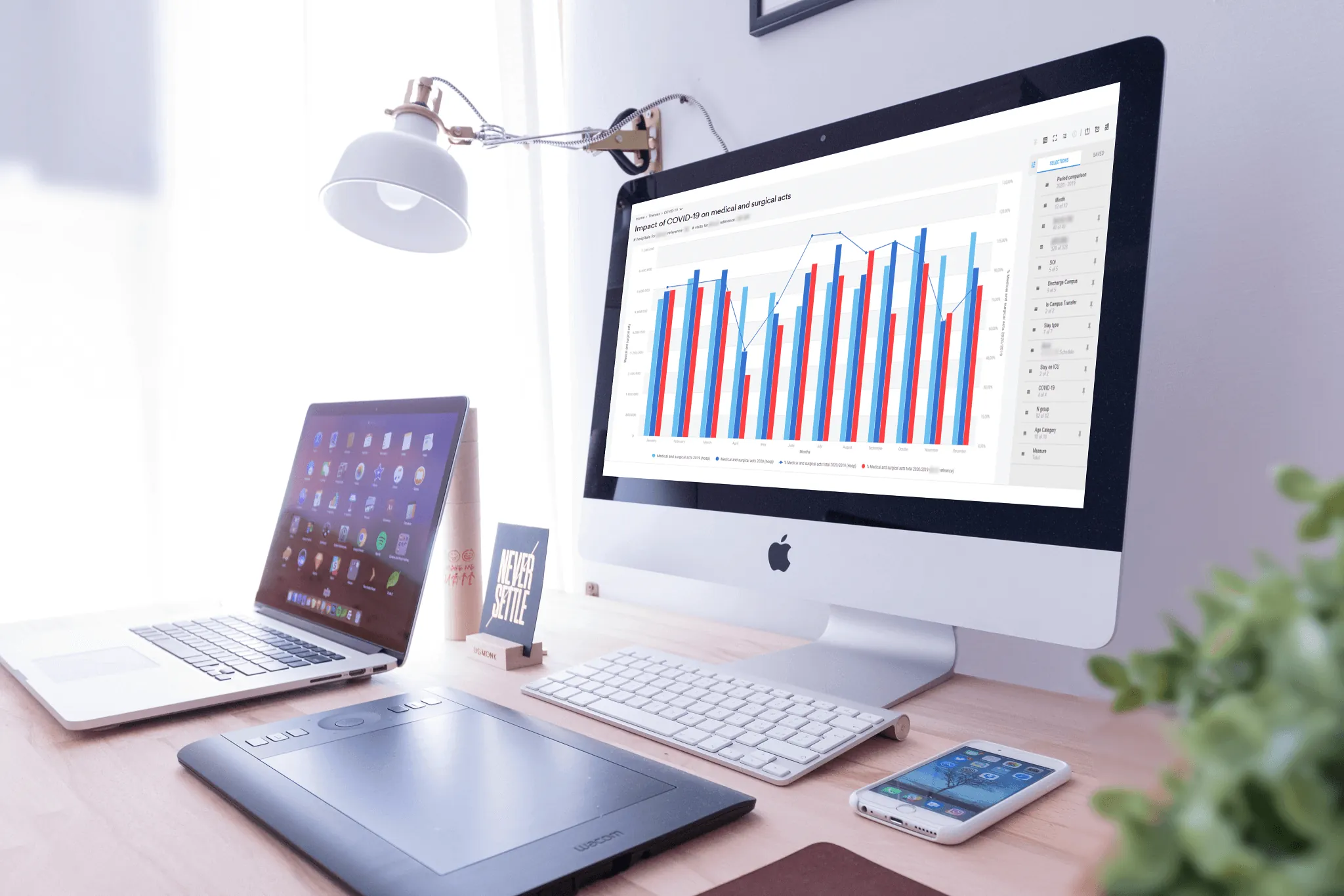What Is Benchmarking?
Benchmarking is a comparative analysis of the performance of one’s own company or organization and the average indicators in the industry taking into account a number of criteria. It came about as a result of global competition and is a popular managerial tool used to improve the quality and efficiency of managing business.
The benefit from benchmarking by bringing your performance level closer to that of the bests in the industry and by developing a strategy for making managerial decisions based on data. This upgrades your business to a new level of competitiveness.
Examples of analytical reports from the solution developed by Smart Analytics are given below. The solution allows benchmarking general indicators of the Belgian hospitals’ activities against those of other healthcare market players in Belgium.






